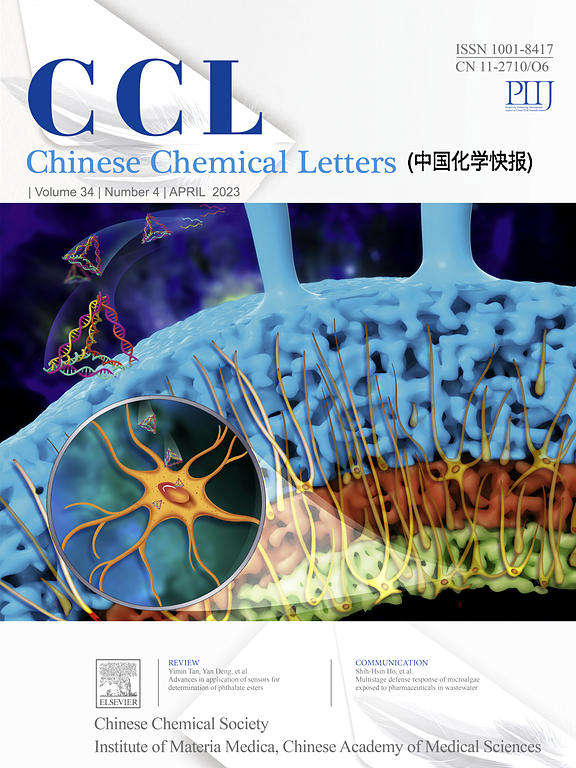通过空间和静电调节在密闭空间中裁剪级联水解和循环效率
IF 8.9
1区 化学
Q1 CHEMISTRY, MULTIDISCIPLINARY
引用次数: 0
摘要
长链线性前体的分子内端到端反应由于其固有的分子间反应倾向而仍然具有挑战性。在此,我们研究了水溶液中三个不同长度的客体在明确定义的纳米空腔内的级联水解和分子内环化反应。在疏水效应的驱动下,这些客人被封装在二聚体胶囊中,由于空间限制,采用不同的构象和方向。具体来说,个子较矮的客人保持了扩展的线性几何形状,而个子较长的客人则采用了折叠的捆绑模式。在反应开始时,较短客体的末端残基表现出较低的反应活性,而较长的客体在腔内预先组织,进行了有效的环化,导致反应动力学的显着差异。此外,静电势场在调节反应速率方面发挥了关键作用,带正电的空腔比带负电的空腔更有效地加速反应,这可能是由于阴离子过渡态的稳定。本研究提供了一种有效的策略,通过利用良好定义的纳米空间来设计模拟酶的纳米反应器。本文章由计算机程序翻译,如有差异,请以英文原文为准。

Tailoring cascade hydrolysis and cyclization efficiency in confined spaces via spatial and electrostatic regulation
Intramolecular end-to-end reactions of long-chain linear precursors remain challenging due to their inherent tendency to undergo intermolecular reactions. Herein, we investigated the cascade hydrolysis and intramolecular cyclization reactions of three guests with varying lengths within the well-defined nanocavities of cavitands in aqueous solution. Driven by hydrophobic effect, these guests were encapsulated within the dimeric capsules, adopting distinct conformations and orientations due to spatial constraints. Specifically, the shorter guest maintained an extended linear geometry, whereas the longer guests adopted a folded binding mode. Upon initiating the reaction, the terminal residue of the shorter guest displayed lower reactivity, while the longer guests, preorganized within the cavity, underwent efficient cyclization, resulting in significant differences in reaction kinetics. Furthermore, electrostatic potential fields played a critical role in modulating reaction rates, with the positively charged cavitand accelerating the reaction more efficiently compared to its negatively charged counterpart, likely due to stabilization of the anionic transition state. This study provides an effective strategy for designing enzyme-mimetic nanoreactors through the utilization of well-defined nanospaces.
求助全文
通过发布文献求助,成功后即可免费获取论文全文。
去求助
来源期刊

Chinese Chemical Letters
化学-化学综合
CiteScore
14.10
自引率
15.40%
发文量
8969
审稿时长
1.6 months
期刊介绍:
Chinese Chemical Letters (CCL) (ISSN 1001-8417) was founded in July 1990. The journal publishes preliminary accounts in the whole field of chemistry, including inorganic chemistry, organic chemistry, analytical chemistry, physical chemistry, polymer chemistry, applied chemistry, etc.Chinese Chemical Letters does not accept articles previously published or scheduled to be published. To verify originality, your article may be checked by the originality detection service CrossCheck.
 求助内容:
求助内容: 应助结果提醒方式:
应助结果提醒方式:


